Box One Drivetrain Review – 11-Speed ain’t Dead

Californian company, Box Components have designed their premium Box One drivetrain to meet the needs of hard-hitting trail and enduro riders. But with the emerging prevalence of 12- speed, can Box Components be a contender in the highly competitive componentry market with an 11-speed drivetrain?
The Box One drivetrain came up on our radar a few years ago; comprising of just a push/push shifter and matching derailleur, it was designed to work with other manufacturer’s cassettes and chains. Now Box Components are offering a revamped and complete drivetrain (minus the cranks) as well as a lifetime warranty against defects or breakages. This potential trump card is a bold move for drivetrain warranty and shows real confidence in their products. So, are Box Components ready to get in the ring and go toe to toe with the establishment?

Box One 11-Speed Rear Derailleur
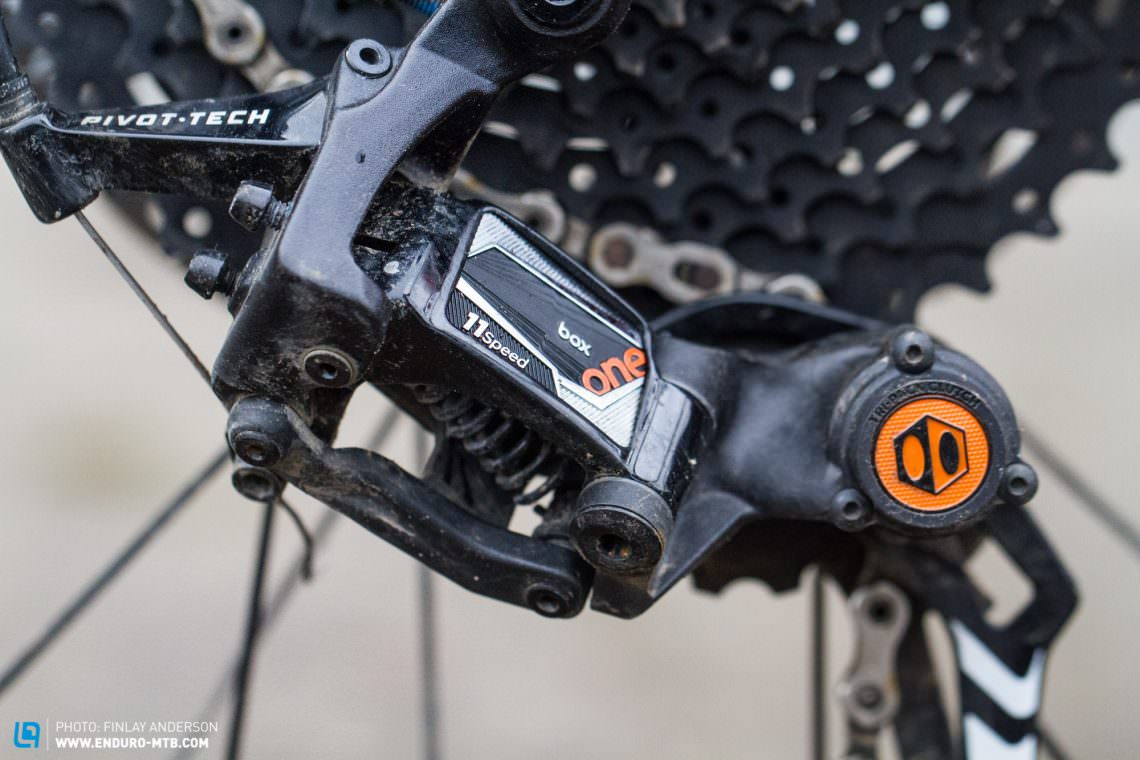
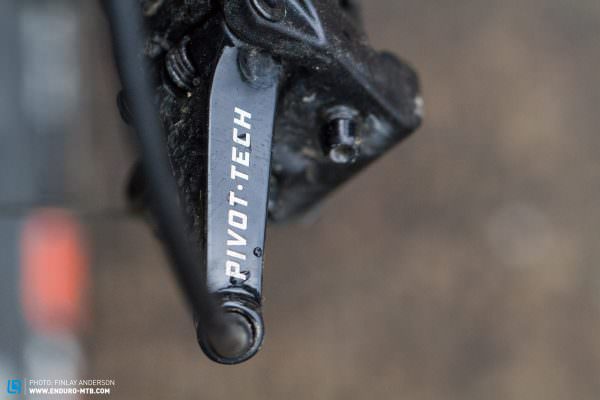

Box Components have done well to create the Box One derailleur with a strong and distinctive look, it projects quality and durability and a splash of orange never hurt anyone. The derailleur body is 6061-T6 Aluminum with a carbon fibre/nylon composite used for the connective tissue. The cage and links are 3D forged which adds further strength and impact resistance to the unit.
Box’ One rear derailleur features a serviceable and adjustable clutch mechanism, designed to minimalise cage bounce and chain slap through a one-way friction plate. This increases the tension as the cage moves forward, then releases the tension to control the chain as it travels back.
Price: € 190
Weight: 288 g
Box One 11-Speed Twin Shifter
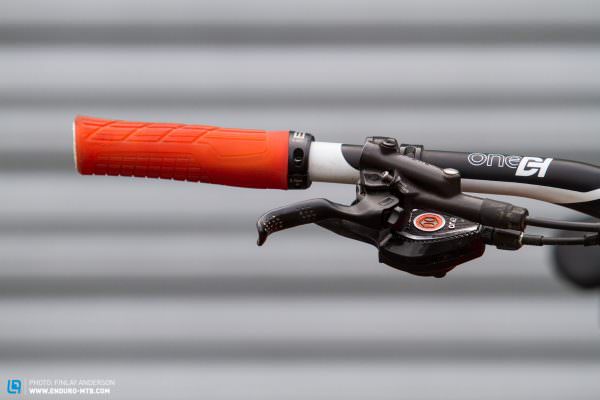

Manufactured out of the same mix of 6061-T6 aluminium and carbon fibre/nylon composite, the chunky shifter looks more robust than most shifters. Gone is the push-push shifting in favour of a Shimano style downshift finger trigger and the usual upshift, which allows up to five cogs on one movement of the thumb. This familiar design has improved the shifter’s ergonomics and, with the large and grippy thumb & index finger controls, the Box One shifter is very rider friendly.
Official mounting options look limited to the standard, single position, mount at the present but this was not an issue for the test.
Price: €80
Weight: 127 g
Box Two 11-46 11-Speed Cassette
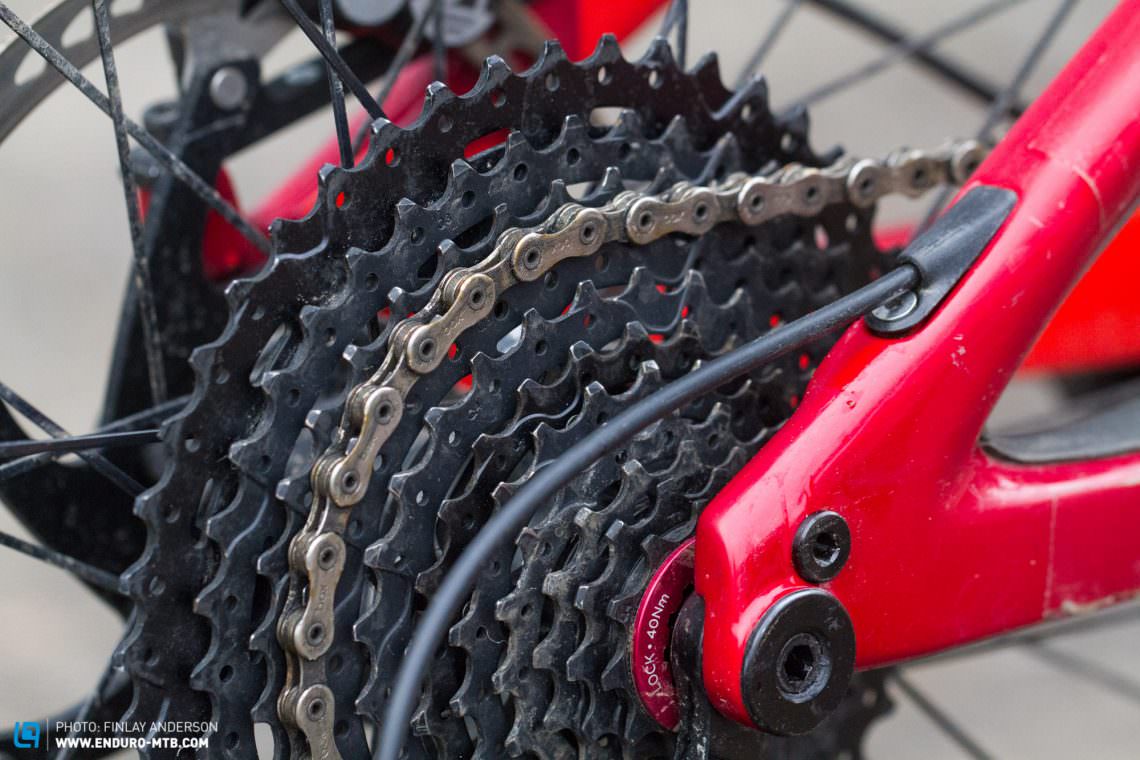
Box Components haven’t made a Box One cassette yet so we were sent the 418% range, HG compatible, Box Two 11-46 unit to match our wide range derailleur. Box Two is Box’ cheaper range of components but, with the cassette, it’s hard to see where corners would have been cut.
The Box Two cassette weighs in at 480 g, about 40 g heavier than an XT 11-46 and features the usual steel smaller rings and 7075-T6 Aluminum for the larger cogs and spider. First impressions are good; the red anodised alloy spider and black rings look great and the finish is excellent. If you’re running a Shimano type freehub, this puppy just slides right on.
The range may be the same as the 11-46 XT cassette, but the cog spacing on the Box Two unit (11-13-15-18-21-24-28-32-36-40-46), is much more rider friendly – the 36-40-46 rather than the 32-37-46 of the XT, means smaller gear steps and less disruption to your cadence.
For riders who need even more range, Box Components offer a 454% range 11-50t cassette but you will pay an 80 g penalty for going bigger.
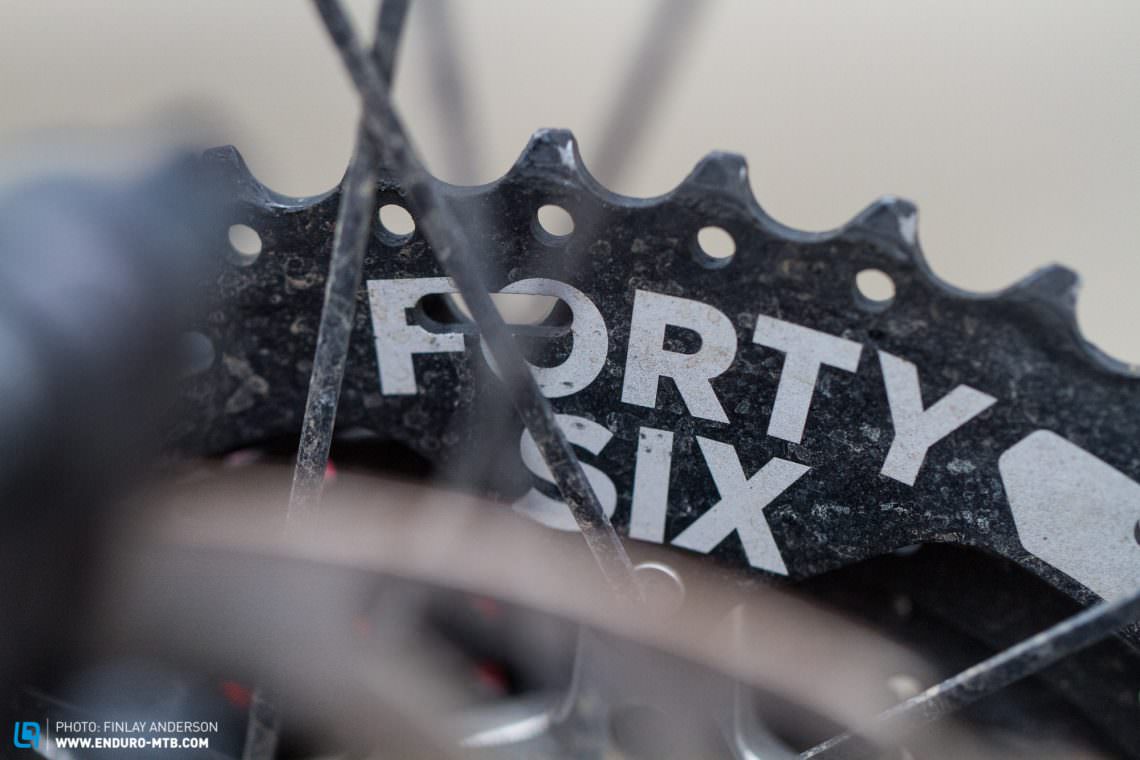
Price: €110
Weight: 480g
Box One 11-Speed Chain
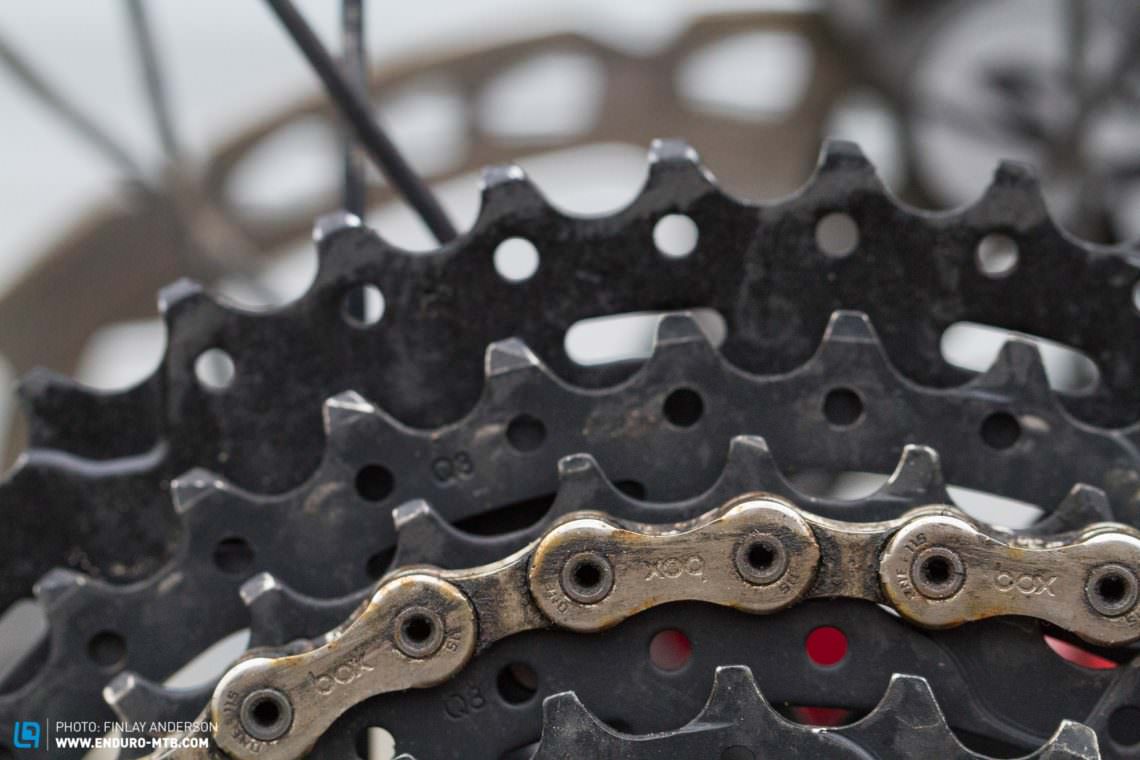
At 243 g for 116 links of heat-treated and nickel plated steel, with a hollow pin and quick link, the Box One chain is on par with the price and quality expectation for a high-performance chain.
Price: €45
Weight: 243 g
Strengths
- Big and grippy shift paddles made the most of the positive feel of the Box One drivetrain.
- The neat Pivot Tech hinged cable guide means that the cable angle and therefore, shifting, remains optimum regardless of which gear your in as well as keeping the unit low-profile and tucked out of harm’s way.
- The Tri-Pack clutch meant that the chain was totally under control.
Weaknesses
- A single mounting option may limited appeal for riders who want a clean cockpit.
Weights in comparison
| Box One | Shimano XT | XX1 Eagle | NX Eagle | |
|---|---|---|---|---|
| Shifter | 127 g | 126 g | 124 g | 109 g |
| Derailleur | 288 g | 280 g | 265 g | 341 g |
| Cassette | 480 g | 440 g | 360 g | 610 g |
| Chain | 243 g | 257 g | 260 g | 270 g |
| Total | 1,138 g | 1,103 g | 1,009 g | 1,330 g |
Prices in comparison
| Box One | Shimano XT | XX1 Eagle | NX Eagle | |
|---|---|---|---|---|
| Shifter | €80 | €49 | €170 | €38 |
| Derailleur | €190 | €88 | €304 | €119 |
| Cassette | €110 | €100 | €458 | €110 |
| Chain | €45 | €40 | €92 | €29 |
| Total | €425 | €227 | €1024 | €296 |
Riding the Box One Drivetrain
If you’ve fitted a drivetrain before the Box One components go on without fuss: our cable stops were bang on, so all we had to do was wind out the b-tension so the top pulley was about 5 mm from the largest cog, adjust the indexing and we were golden. The Box One derailleur feels and looks solid; clutch action was set firm, subsequently, shifting up or down the Box Two block was super crisp and precise. Throughout the test period, shifting remained totally composed, with absolutely no ghost shifting or vagueness despite thick mud, lazy shifts and dumping gears under load. Impressive stuff. The trigger finger shifter allows only single downshifts but rapidly cycling the trigger will drop you down the gears plenty quick enough. The upshift thumb lever is large and textured so there is plenty of grip, even in the wet: if you’ve got long and strong thumbs, Box One can shift up five cogs at a time.
Our testing grounds are comprised of long, grinding and often technical climbs. With a 30t up front, the spacing between the 11-46 cassette’s teeth was spot on. With the XT 11-46 cassette, we were always left wishing that we had a 40 or 42t cog to fill the big jump between the 37 and 46t cog; the Box Two grants that wish and delivers a solid range for climbing.
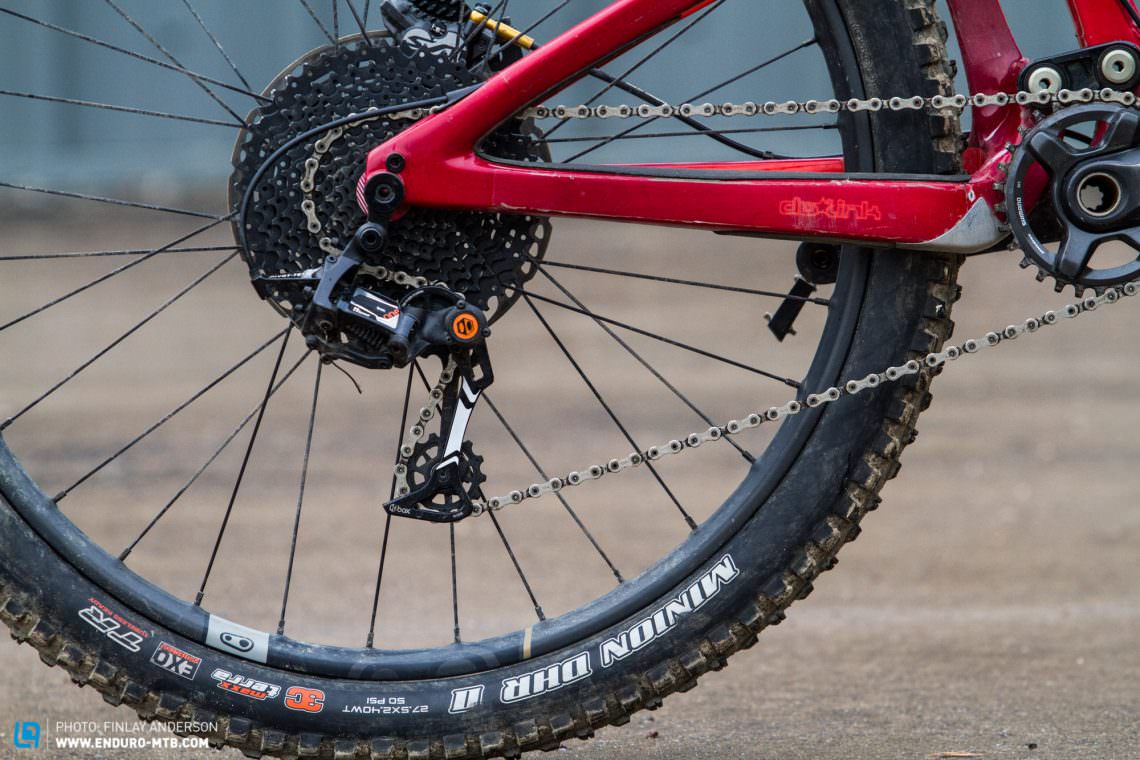
Over the test period, wear on the cassette was minimal and we suffered zero chain issues with plenty of life left in the Box One chain after 4 months of use. Box Components no longer recommend that you run a chain device as they claim that new derailleur design has sufficient tension to retain the chain even in the toughest terrain. Like a red flag to a bull, we took that as a challenge but, despite riding rough and fast terrain, as well as some uplift DH days, we didn’t drop a chain for the whole test period. The mech clutch tension keeps the chain firmly under control, with only very minor chain bounce even in the smaller cogs.
However, the Box One drivetrain is not without flaws. With the movement of the derailleur cage and the clutch permanently on, the rear wheel is a bit of a pain to replace once removed, not the end of the world in the workshop but it increases repair time and stress levels if you puncture on the trail or in a race.
Conclusion
Box Components have designed the Box One drivetrain to be able to cope with the hard-knock world of enduro, downhill and even riding the Red Bull Rampage but it will be compared to Shimano’s trail rider’s benchmark, XT. Overall weight is similar but the real world cost of XT is substantially less…
So why would you choose to run Box One? Three reasons: Box One performs flawlessly, it has a lifetime warranty against breakages and you’ve got to cheer for the underdog. Thanks to Box Components, 11-speed ain’t dead yet.
Did you enjoy this article? If so, we would be stoked if you decide to support us with a monthly contribution. By becoming a supporter of ENDURO, you will help secure a sustainable future for high-quality mountain bike journalism. Click here to learn more.
Words: Thomas Corfield Photos: Finlay Anderson







